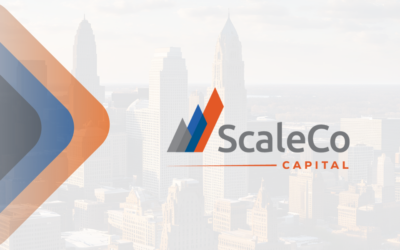 April 11, 2025 • Articles / Resources, Scale Community
April 11, 2025 • Articles / Resources, Scale Community
A Constructive Guide for Business Owners on EBITDA
Understanding EBITDA
EBITDA, which stands for Earnings Before Interest, Taxes, Depreciation, and Amortization, is a valuable tool for assessing your company’s performance and overall enterprise value. By starting with EBIT and adding back depreciation and amortization expenses for a specific period, you can obtain a clear picture of your earnings.
EBITDA as a Proxy for Cash Flow
While it may not provide a direct comparison to cash flow, EBITDA serves as a useful indicator, especially for service-based businesses. It can help you demonstrate the consistency of your cash flow—a key consideration for potential private equity investors. By presenting EBITDA, you effectively showcase your earnings while accounting for capital expenditures (capex) and any interest associated with outstanding debt, which might become less relevant post-investment. This approach removes non-cash expenses, allowing for a clearer evaluation of your core operational performance and facilitating comparisons with industry peers.
The Role of Due Diligence
EBITDA is often the starting point for investment discussions, but engaging in thorough due diligence is crucial. This process helps uncover any operational challenges reflected in financial reporting. Understanding your business’s predictability is an essential aspect of due diligence, typically assessed through a quality of earnings review covering three to five years of EBITDA. This review can reveal valuable trends—be it increases, decreases, or stability—providing insights into the health of your business.
Considerations for EBITDA Addbacks
As a business owner, it’s important to evaluate whether specific non-recurring or non-operational expenses should be added back to your EBITDA for normalization. Consider expenses such as:
- Over or Under Market Owner Salary
- Rent – Business owners sometimes own the building they operate from and therefore do not charge rent and account for the expense on the income statement. If this is an expense that would need to be incurred after a sale or investment, rent would need to be expensed.
- Non-Recurring Expenses – These can include one-time consulting or M&A fees preparing a business for sale, among other expenses that are not expected to recur in the future.
- Personal Owner Expenses – Examples can include a business owner’s personal vehicle or travel expenses, and perhaps even a family member salary that does not have a specific role.
Sample Income Statement:
| Item | Amount |
| Revenue | $1,000,000 |
| (-) COGS | $400,000 |
| Gross Profit | $600,000 |
| (-) Operating Expenses | $300,000 |
| EBIT | $300,000 |
| (+) Depreciation & Amort. | $50,000 |
| EBITDA | $350,000 |
| Addbacks: | |
| (+) Owner Salary Adj. | $50,000 |
| (+) Rent Adj. | $30,000 |
| (+) One-Time Travel Fee | $20,000 |
| (+) Personal Expenses | $10,000 |
| Adjusted EBITDA | $460,000 |
Gaining a solid understanding of both your historical and projected EBITDA will empower you to have informed and constructive conversations with potential investors or buyers. This knowledge not only enhances transparency but also sets realistic valuation expectations, paving the way for successful negotiations.
Are you preparing your business for sale or investment and have questions, let’s connect!
About ScaleCo
ScaleCo Capital is a Cleveland-based control investor in companies with less than $5 million of EBITDA headquartered in the Great Lakes region. ScaleCo has made over 22 platform investments and 25 add-on investments. ScaleCo collaborates with companies in the fields of business services, tech-enabled services, value-added distribution and assembly, and training and compliance, providing operational expertise and strategic resources to enhance their growth potential and develop long-term value. To learn more, visit scaleco.com.
